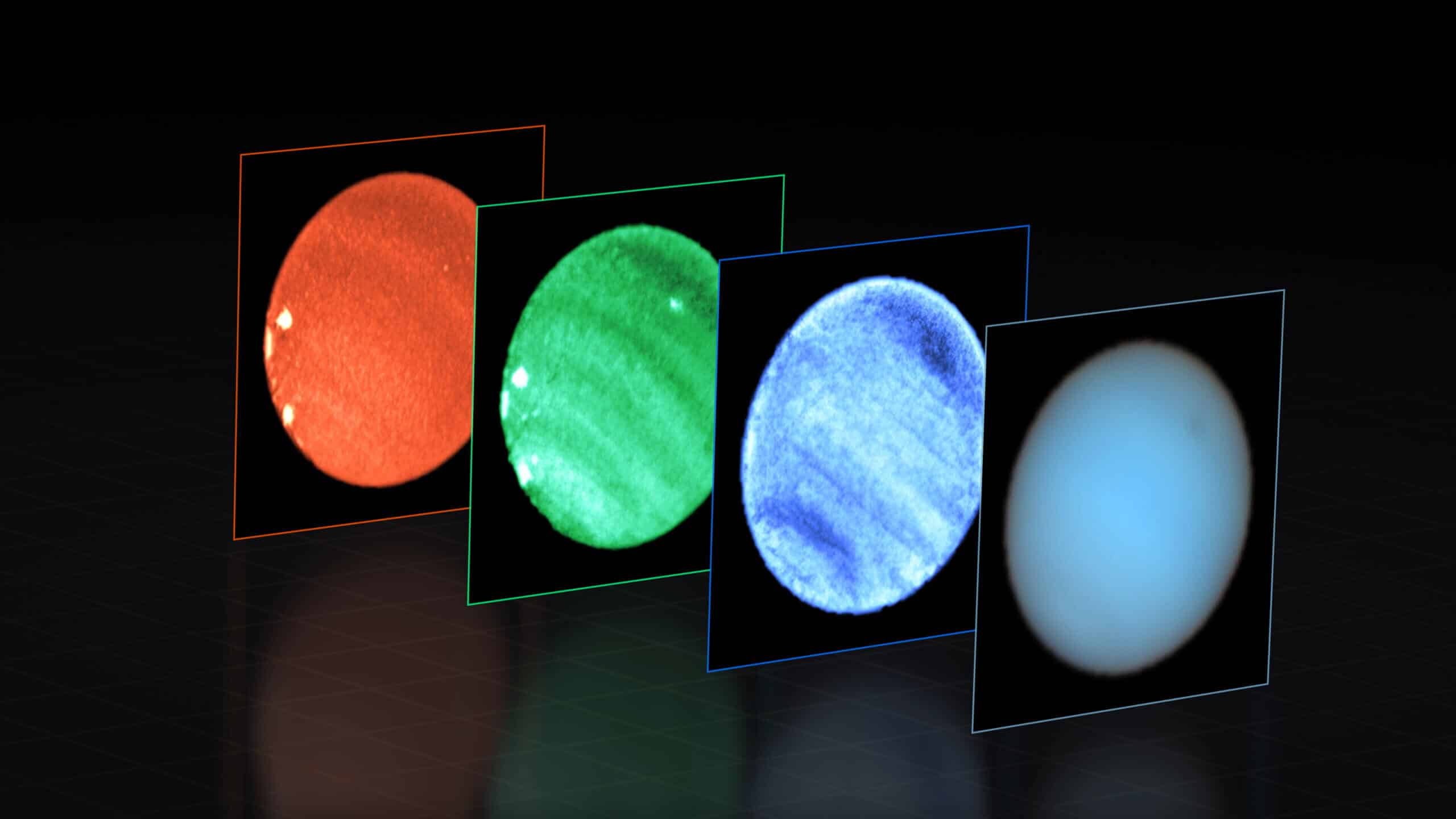New research reveals mysterious dark and bright spots in Neptune's atmosphere using first ground-based observations with the VLT telescope

Using the Very Large Telescope (VLT) of the European Southern Observatory (ESO), astronomers observed a large dark spot in the atmosphere of Neptune (in Hebrew Rahab), with an unexpected smaller bright spot nearby. This is the first time ever that a dark spot on the planet has been observed using an earthly telescope. These mysterious elements in the blue background of Neptune's atmosphere are a mystery to astronomers, and the new results provide more clues about their nature and origin.
Great spots are common elements in the atmospheres of giant planets, the best known being the Great Red Spot of Jupiter. On Neptune, a dark spot was first discovered by NASA's Voyager 2 in 1989, before disappearing a few years later. "Since the first discovery of a dark spot, I have always wondered what these elusive, short-lived dark elements are," says Patrick Irwin, a professor at the University of Oxford in the UK and lead researcher of the study published in Nature Astronomy.
Irwin and his team used data from ESO's VLT to rule out the possibility that dark spots are created by "brightening" in clouds. The new observations suggest instead that dark spots are likely the result of air particles darkening in a layer below the main visible fog layer, as ice and fog mix in Neptune's atmosphere.
It was not easy to come to this conclusion because dark spots are not permanent elements in Neptune's atmosphere and astronomers have never before been able to study them in sufficient detail. The opportunity came after the Hubble Space Telescope discovered several dark spots in Neptune's atmosphere, including a spot in its northern hemisphere that was first spotted in 2018. Irwin and his team immediately set out to study it from the ground - using an instrument ideally suited to these challenging observations.
Using the VLT's MUSE three-dimensional spectrograph, the researchers were able to separate sunlight reflected from Neptune and its spots into its wavelengths, and obtain a three-dimensional spectrum. This meant they could study the stain in greater detail than had previously been possible. "I am really happy that we were able to discover for the first time a dark spot from the ground and also to record for the first time the reflection spectrum of such an element," says Irwin.
Because different wavelengths probe different depths in Neptune's atmosphere, this spectrum allowed astronomers to better determine how high the dark spot is in the planet's atmosphere. The spectrum also provided information about the chemical composition of the different layers of the atmosphere, giving the team clues as to why the spot appeared dark.
The observations also yielded a surprising result. "In the process, we discovered a rare type of deep bright cloud that has never been detected before, not even from space," says Michael Wong, co-author of the paper. This rare type of cloud appeared as a bright spot right next to the larger main dark spot, and data from the VLT show that the new "deep bright cloud" is at the same level in the atmosphere as the main dark spot. This means that it is an entirely new type of element compared to the small "companion" clouds of high-altitude methane ice observed in the past.
More of the topic in Hayadan:
